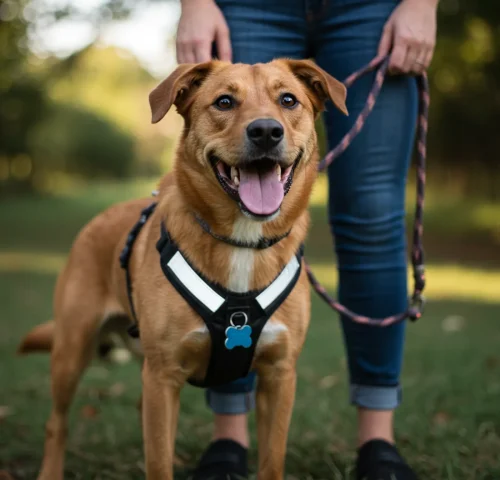Why Dog Safety Matters
Accidents can happen in a moment, and many are preventable. Whether it’s an open gate, toxic food left out, or extreme weather, being proactive about safety reduces risks and gives you peace of mind. A safe dog is a confident, happy dog who can enjoy life without unnecessary hazards.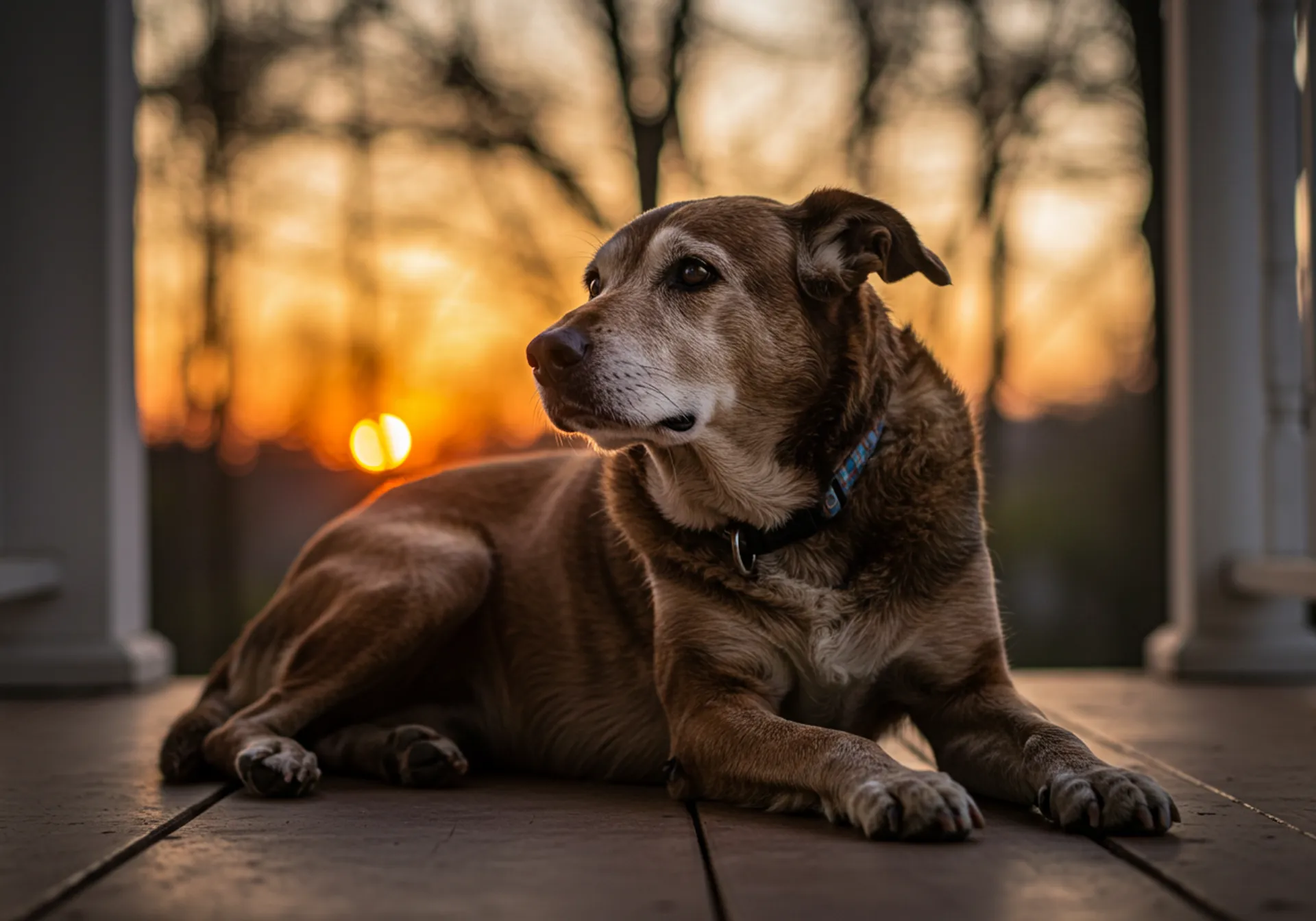
Dog Safety at Home
Your home should be a safe haven for your pup, but everyday items can pose risks if you’re not careful.
Pet-Proofing Your Home
- Keep cleaning supplies, chemicals, and medications stored securely.
- Remove or secure toxic plants such as lilies, aloe, and poinsettias.
- Cover electrical cords or keep them out of reach of curious chewers.
- Use baby gates to block off restricted areas if needed.
Safe Spaces
Provide a designated area with a bed, water bowl, and toys where your dog can relax. This helps them feel secure and prevents them from getting into trouble when unsupervised.
Food Safety
Some human foods are toxic to dogs, including chocolate, grapes, onions, and xylitol (found in sugar-free gum). Store food securely and teach family members not to share unsafe snacks. For more on safe diets, check out our Dog Nutrition category.
Outdoor Safety
Exploring the outdoors is one of the best parts of a dog’s life, but it comes with potential hazards. Preparation and awareness go a long way toward keeping your dog safe outside.
Leash and Collar Safety
Always use a well-fitted collar or harness when outdoors. A leash helps prevent accidents with cars, other animals, or distractions. For off-leash activities, ensure the area is securely fenced and safe.
Weather Concerns
Dogs are sensitive to temperature extremes. In summer, avoid hot pavement, provide shade, and never leave your dog in a parked car. In winter, protect against frostbite with dog boots or sweaters for short-haired breeds.
Pest Protection
Ticks, fleas, and mosquitoes carry diseases that affect dogs. Use vet-recommended preventives year-round. Check your dog after hikes or outdoor play for signs of ticks.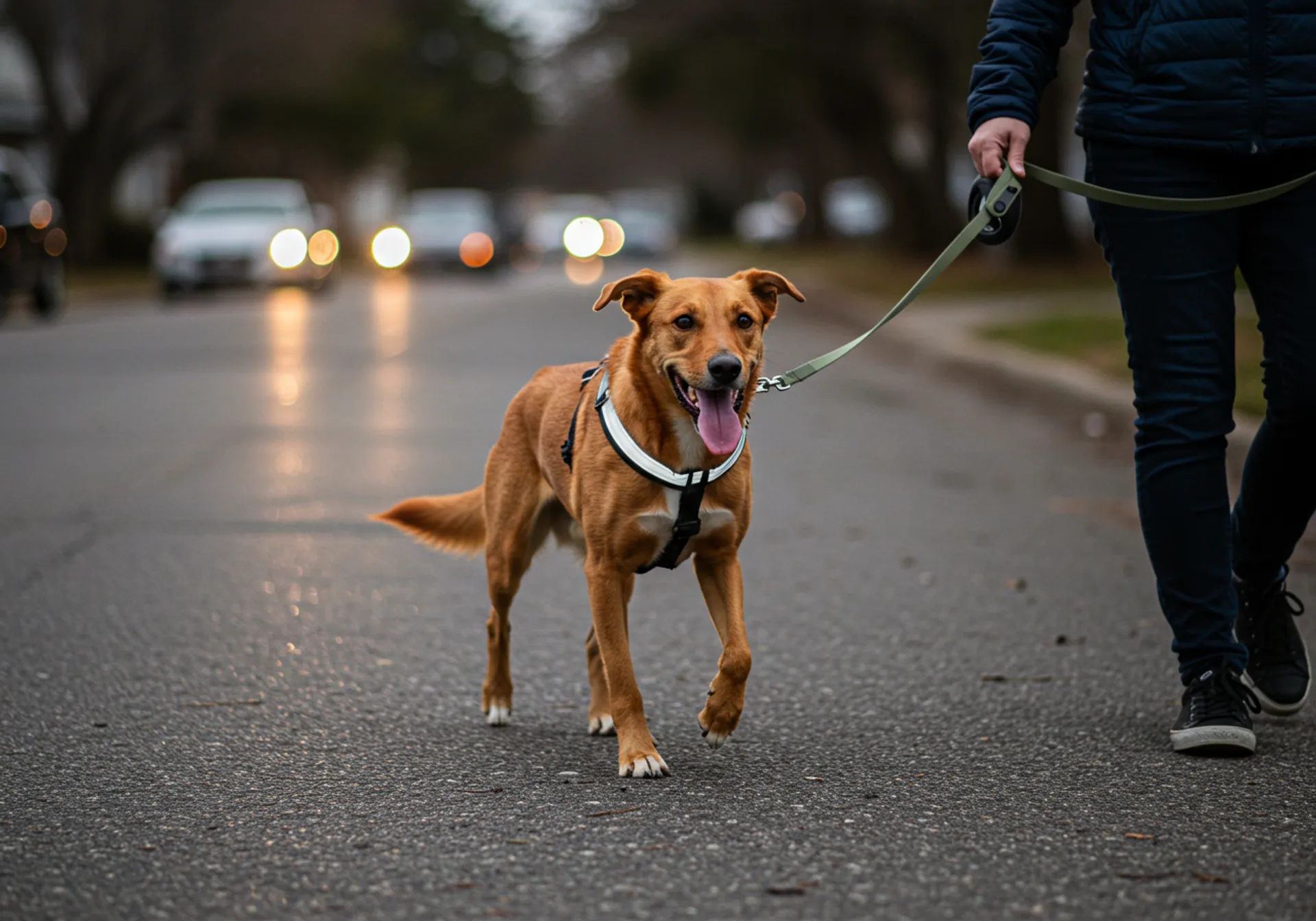
Travel Safety
Whether it’s a trip to the vet or a road trip, travel requires extra precautions for your dog’s safety.
Car Safety
- Use a secure crate, carrier, or harness seatbelt designed for dogs.
- Never allow your dog to ride in the front seat — airbags can be dangerous.
- Keep heads inside the car; while dogs love the breeze, it risks injury from debris.
Public Transport and Flights
If traveling by bus, train, or plane, check the carrier’s pet policies in advance. Use secure, ventilated carriers and make sure your dog is comfortable with confinement before long trips.
Identification
Always travel with proper ID on your dog’s collar. Microchipping is a reliable backup if your pup gets lost during travel or outdoor adventures.
Seasonal Safety Tips
Each season brings unique challenges for dog safety. Adjust routines to keep your pup safe year-round.
Summer
Provide plenty of water and shade, avoid midday heat, and watch for signs of heatstroke such as heavy panting or lethargy. Frozen dog treats can help your pup cool off.
Winter
Cold weather can be harsh on paws. Use booties or paw balm to protect against ice and salt. Keep walks shorter and provide extra blankets at home.
Spring
Allergies are common in spring. Watch for sneezing, itchy skin, or watery eyes. Also be mindful of fertilizers and pesticides in yards or parks.
Fall
Shorter days mean more walks in the dark. Use reflective collars, leashes, or LED lights to keep your pup visible to drivers.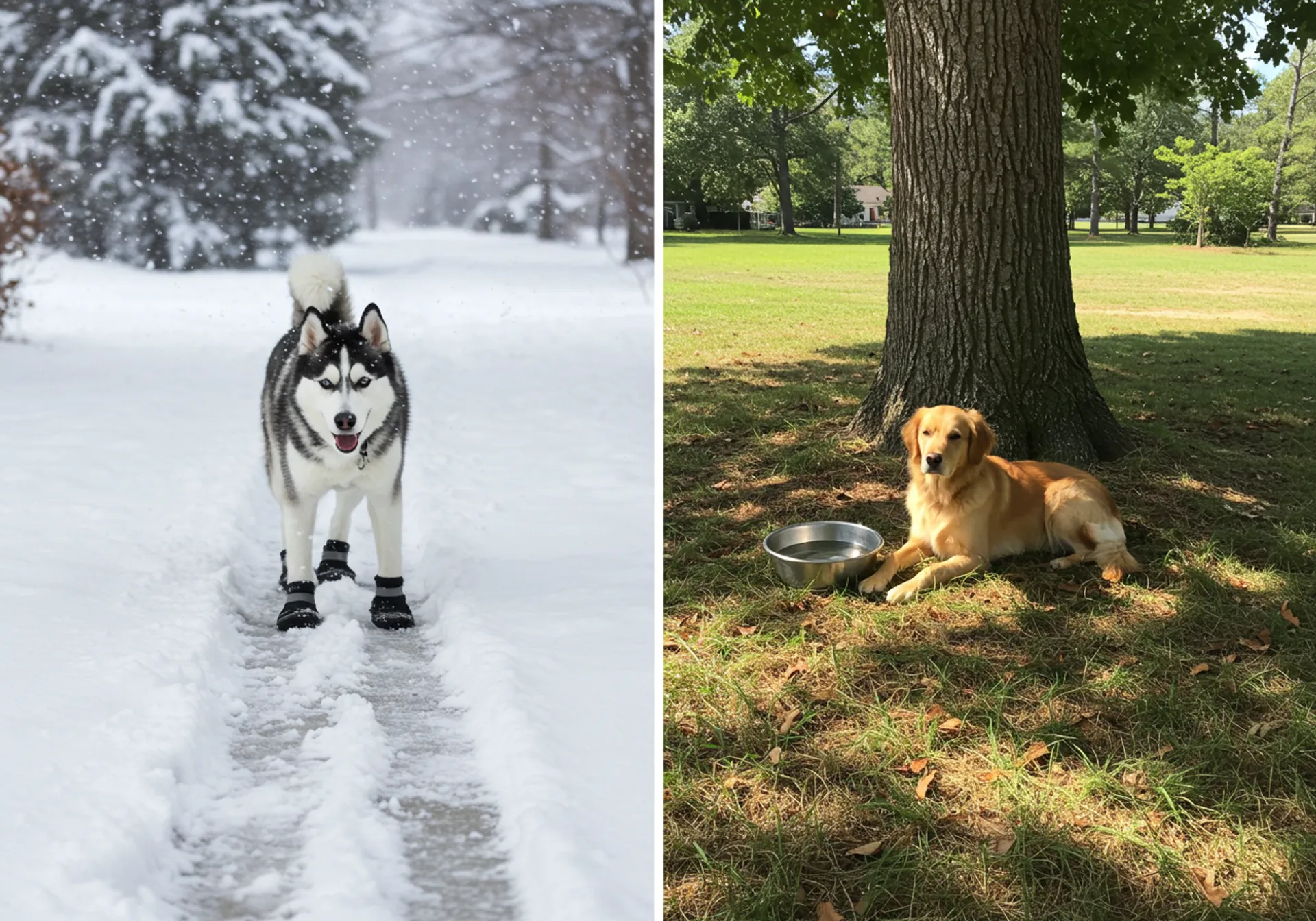
Safety With Other Animals
Interactions with other animals can be unpredictable. Supervise play with other dogs and introduce them gradually. If walking in areas with wildlife, keep your dog leashed to avoid risky encounters.
Emergency Preparedness
No one likes to think about emergencies, but being prepared can save your dog’s life.
First Aid Kit
Keep a dog-specific first aid kit at home and in the car. Include items like bandages, antiseptic wipes, tweezers, and a pet thermometer.
Emergency Plan
Have a plan for natural disasters or evacuations. Identify pet-friendly shelters or hotels, and keep extra food, water, and medications ready.
Know Poison Control
Save the number for your vet and the ASPCA Animal Poison Control Center. Quick action is critical if your dog ingests something toxic.
Signs Your Dog May Be Unsafe or Unwell
Being alert to warning signs can help you act quickly:
- Excessive panting or drooling in heat
- Limping, reluctance to move, or stiffness
- Unusual lethargy or sudden behavior changes
- Repeated vomiting, diarrhea, or refusal to eat
- Excessive scratching or visible parasites
If you notice these symptoms, consult your veterinarian promptly.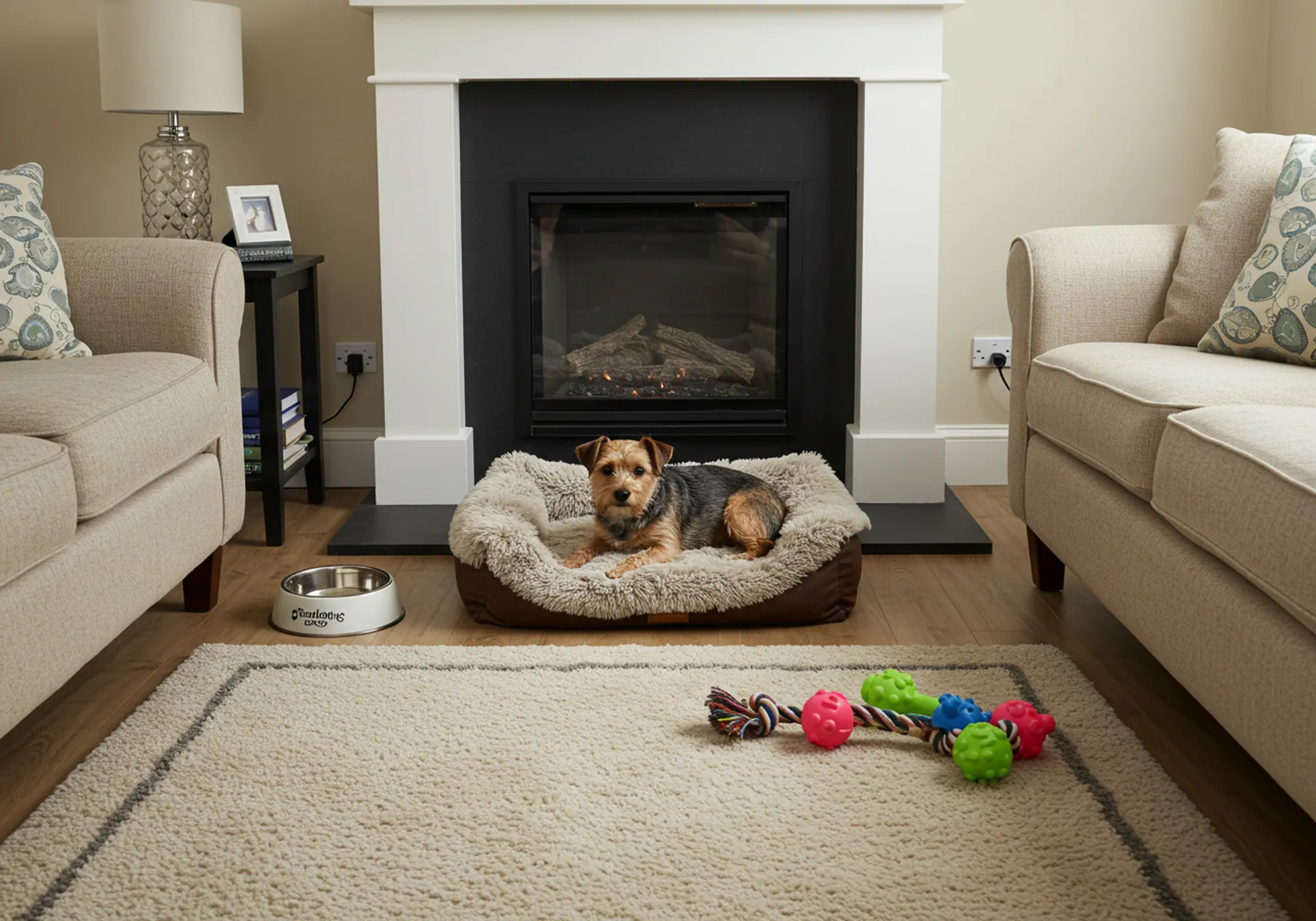
Final Thoughts
Protecting your pup doesn’t mean restricting their fun — it means creating a safe environment where they can thrive. By practicing these dog safety tips at home, outdoors, and while traveling, you’ll give your furry friend the freedom to explore and play without unnecessary risks. For more resources, visit our Dog Safety category here on The Dog Blog.



